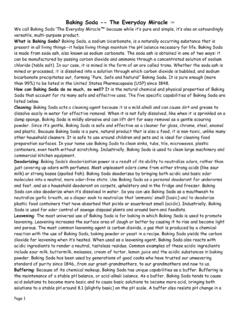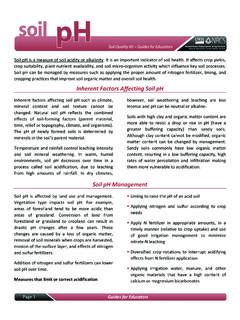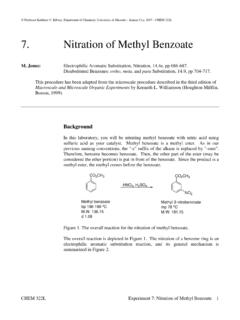Transcription of Chapter 13: Measles; Epidemiology and Prevention of ...
1 Measles Measles is an acute viral infectious disease. References to measles can be found from as early as the 7th century. The Measles disease was described by the Persian physician Rhazes in the Highly contagious viral illness 10th century as more to be dreaded than smallpox. First described in 7th century In 1846, Peter Panum described the incubation period Near universal infection of measles and lifelong immunity after recovery from the of childhood in disease. Enders and Peebles isolated the virus in human prevaccination era and monkey kidney tissue culture in 1954.
2 The first live Common and often fatal in attenuated vaccine was licensed for use in the United States developing countries in 1963 (Edmonston B strain). Before a vaccine was available, infection with measles virus was nearly universal during childhood, and more than 90%. of persons were immune by age 15 years. Measles is still a common and often fatal disease in developing countries. The World Health Organization estimates there were 145,700 deaths globally from measles in 2013. Measles Virus The measles virus is a paramyxovirus, genus Morbillivirus. It is 120 250 nm in diameter, with a core of single-stranded Measles Virus 13.
3 RNA, and is closely related to the rinderpest and canine Paramyxovirus (RNA). distemper viruses. Two membrane envelope proteins are Hemagglutinin important important in pathogenesis. They are the F (fusion) protein, surface antigen which is responsible for fusion of virus and host cell membranes, viral penetration, and hemolysis, and the H One antigenic type (hemagglutinin) protein, which is responsible for adsorption Rapidly inactivated by heat, of virus to cells. sunlight, acidic pH, ether and trypsin There is only one antigenic type of measles virus. Although studies have documented changes in the H glycoprotein, these changes do not appear to be epidemiologically important ( , no change in vaccine efficacy has been observed).
4 Measles virus is rapidly inactivated by heat, sunlight, acidic pH, ether, and trypsin. It has a short survival time (less than 2 hours) in the air or on objects and surfaces. Pathogenesis Measles Pathogenesis Measles is a systemic infection. The primary site of infection Respiratory transmission is the respiratory epithelium of the nasopharynx. Two to of virus three days after invasion and replication in the respiratory Replication in nasopharynx epithelium and regional lymph nodes, a primary viremia and regional lymph nodes occurs with subsequent infection of the reticuloendothelial system.
5 Following further viral replication in regional and Primary viremia 2-3 days distal reticuloendothelial sites, a second viremia occurs 5 7 after exposure days after initial infection. During this viremia, there may be Secondary viremia 5-7 days infection of the respiratory tract and other organs. Measles after exposure with spread virus is shed from the nasopharynx beginning with the to tissues prodrome until 3 4 days after rash onset. Centers for Disease Control and Prevention 209. April, 2015. Epidemiology and Prevention of Vaccine-Preventable Diseases, 13th Edition Measles Clinical Features The incubation period of measles, from exposure to Measles Clinical Features prodrome, averages 10 12 days.
6 From exposure to rash Incubation period 10-12 days onset averages 14 days (range, 7 21 days). Prodrome 2-4 days The prodrome lasts 2 4 days (range 1 7 days). It is charac- stepwise increase in fever to terized by fever, which increases in stepwise fashion, often 103 F 105 F peaking as high as 103 F 105 F. This is followed by the cough, coryza, conjunctivitis onset of cough, coryza (runny nose), or conjunctivitis. Koplik spots (rash on Koplik spots, a rash present on mucous membranes, is mucous membranes) considered to be pathognomonic for measles. It occurs 1 2.
7 Rash days before the rash to 1 2 days after the rash, and appears 2-4 days after prodrome, as punctate blue-white spots on the bright red background 14 days after exposure of the buccal mucosa. persists 5-6 days The measles rash is a maculopapular eruption that usually begins on face and lasts 5 6 days. It begins at the hairline, then involves the face upper neck and upper neck. During the next 3 days, the rash gradually proceeds downward and outward, reaching the hands and maculopapular, becomes feet. The maculopapular lesions are generally discrete, but confluent may become confluent, particularly on the upper body.
8 13 fades in order of appearance Initially, lesions blanch with fingertip pressure. By 3 4 days, most do not blanch with pressure. Fine desquamation occurs over more severely involved areas. The rash fades in the same order that it appears, from head to extremities. Other symptoms of measles include anorexia; diarrhea, Measles Complications by especially in infants; and generalized lymphadenopathy. Age Group Complications Approximately 30% of reported measles cases have one or more complications. Complications of measles are most common among children younger than 5 years of age and adults 20 years of age and older.
9 From 1985 through 1992, diarrhea was reported in 8% of measles cases, making this the most commonly reported complication of measles. Otitis media was reported in 7% of cases and occurs almost exclusively in children. Pneumonia (in 6% of reported cases) may be viral or superimposed bacterial, and is the most common cause of measles-related Measles Complications death. Diarrhea 8%. Otitis media 7% Acute encephalitis occurs in approximately of reported cases. Onset generally occurs 6 days after rash Pneumonia 6% onset (range 1 15 days) and is characterized by fever, Encephalitis headache, vomiting, stiff neck, meningeal irritation, Seizures drowsiness, convulsions, and coma.
10 Cerebrospinal fluid Death shows pleocytosis and elevated protein. The case-fatality rate is approximately 15%. Some form of residual neurologic Based on 1985-1992 surveillance data damage occurs in as many as 25% of cases. Seizures (with or without fever) are reported in of cases. 210. Measles Death from measles was reported in approximately of the cases in the United States from 1985 through 1992. As with other complications of measles, the risk of death is highest among young children and adults. Pneumonia accounts for about 60% of deaths. The most common causes of death are pneumonia in children and acute encephalitis in adults.
















